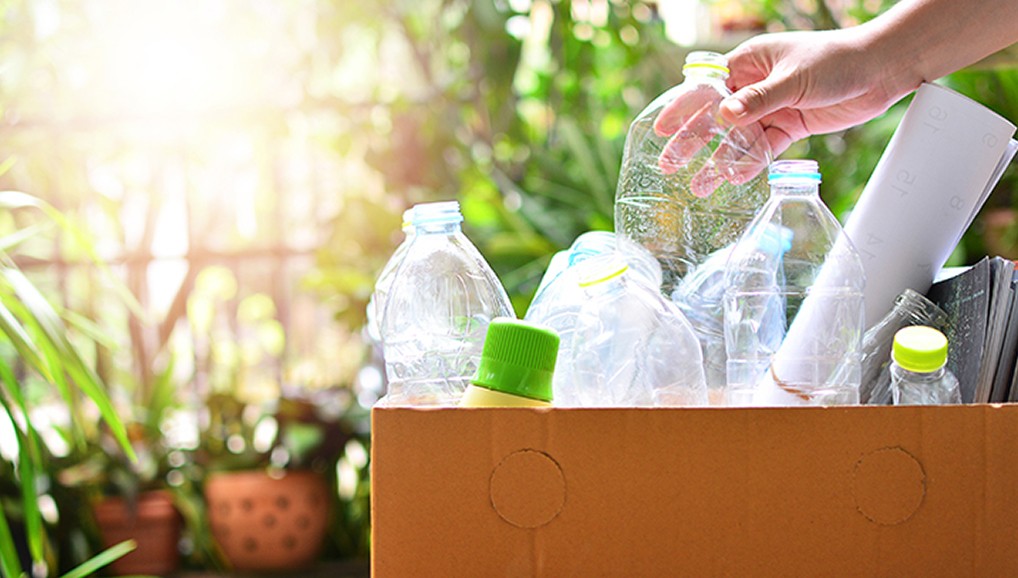
Canada's efforts toward building a circular economy for all used materials is off to a flying start in 2021. Launched January 27, the Canada Plastics Pact (CPP) is part of a global commitment involving ten nations (so far) and is truly more than just talk. The pact unites key stakeholders representing the entire plastics value chain, from massive retailers and packaging producers to recyclers and manufacturers, with the collective long-term goal of eliminating plastic waste entirely by establishing a sustainable circular economy.
Initial targets for 2025 are ambitious - as they need to be. Major goals to get things going include establishing a standard list of "problematic" packaging and eliminating it, and for all packaging that remains in circulation, it will be designed for reuse, recycling or composting. In the next four years, members have also committed to the use of 30 percent recycled content in all new plastic packaging, and to a 50 percent plastic packaging recycling or composting rate.
According to Christina Seidel, the executive director of the Recycling Council of Alberta (RCA), the pact's goals are completely consistent with their own, and the objectives are both progressive and clear. She now sees the CPP as the leading force on the reduction of plastic waste in Canada. "It is progressive to talk about eliminating unnecessary or problematic plastic packaging. It's not reducing, it's eliminating. That's progressive."
Seidel emphasizes that it is significant that the pact is also very well positioned within the plastics value chain. "We have some very powerful members involved, from a lot of different sectors. It's not just environmental groups, it's not just the plastics industry."
Notably, the pact includes very large corporations with extensive market influence, such as Loblaws and Coca-Cola. These kinds of large companies, according to Seidel, have not committed to anything this progressive in the past with respect to plastics waste reduction. So having them support the idea of actually rethinking and revising all current packaging to suit a circular economy truly does mean a lot.
"I think we're starting to see a whole new level of business and corporate leadership that's more progressive than anything we've ever seen," says Seidel. "It's not because they're being forced to do it. They're actually doing it on a voluntary basis because they see the value in terms of the role that they play and the influence they can have."
So what does it all mean for recyclers? If the pact does what it is setting out to do, plastics recyclers should expect opportunity and increased profit margins once a working circular economy is established, one where products and packaging are designed for recycling and sustainable end markets are set in place.
"The plastics recycling industry is going to play a really key role in making the required changes happen," says Seidel. "Plastic recyclers are front and centre, and without them, there's no way we can achieve a continually circulating economy for plastics. Through the pact, we're not just recycling something once, and then it goes away. We're actually trying to keep these materials in the economy for a long time, to be recycled multiple times."
Seidel continues, "The goals of the Plastics Pact look far beyond recycling. We are not going to recycle our way out of this problem. The pact is looking at redesign, reduction and elimination, and until we go down these roads, we are not going to be able solve the plastic waste problem."
For the Recycling Council of Alberta, which in 2020 refined their vision to be more focused on circular economy, as opposed to resource recovery and recycling, their biggest focus over the past year and going forward will be the establishment of workable EPR for packaging (including plastics) and printed paper in the province. Which, incidentally, fits right in with the goals of the CPP.
"A lot of our energy has been directed toward bringing EPR to Alberta, and that's one of the key elements for making the circular economy happen. We are anticipating EPR coming to our province shortly."
For more on the implications and details behind the Canada Plastics Pact, based on our conversation with CPP's managing director, George Roter, see our March 2021 cover story here.
This article was originally published as the Letter from the Editor, in the March, 2021 edition of Recycling Product News, Volume 29, Number 2.




